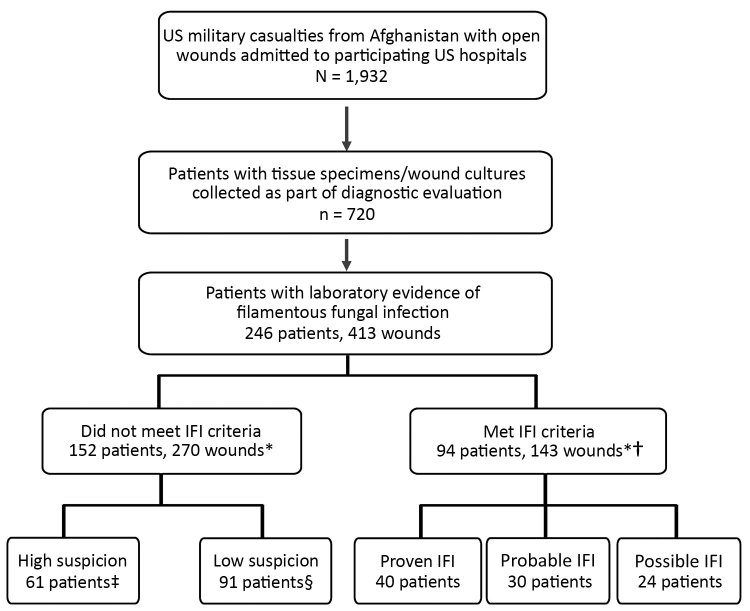Figure 1.
Combat casualties with laboratory evidence of fungal infection in study of US military patients who had laboratory evidence of fungal infection after battlefield trauma in Afghanistan, June 1, 2009–December 31, 2014. *Total of 143 IFI wounds, 120 high-suspicion wounds, and 150 low-suspicion wounds. For the person-level analysis, patients with multiple wounds were included in the IFI group even if 1 of their wounds met criteria other than for an IFI; similarly, patients with both low-suspicion and high-suspicion wounds were included in the high-suspicion group. †94 patients had 143 wounds that met criteria for an IFI; these same patients had 31 wounds that met criteria for high-suspicion wounds and 16 wounds that met criteria for low-suspicion wounds. ‡61 patients had 89 wounds that met criteria for high-suspicion wounds and 14 wounds that met criteria for low-suspicion wounds. §91 patients had 120 wounds classified as low-suspicion wounds. IFI, invasive fungal infection.

